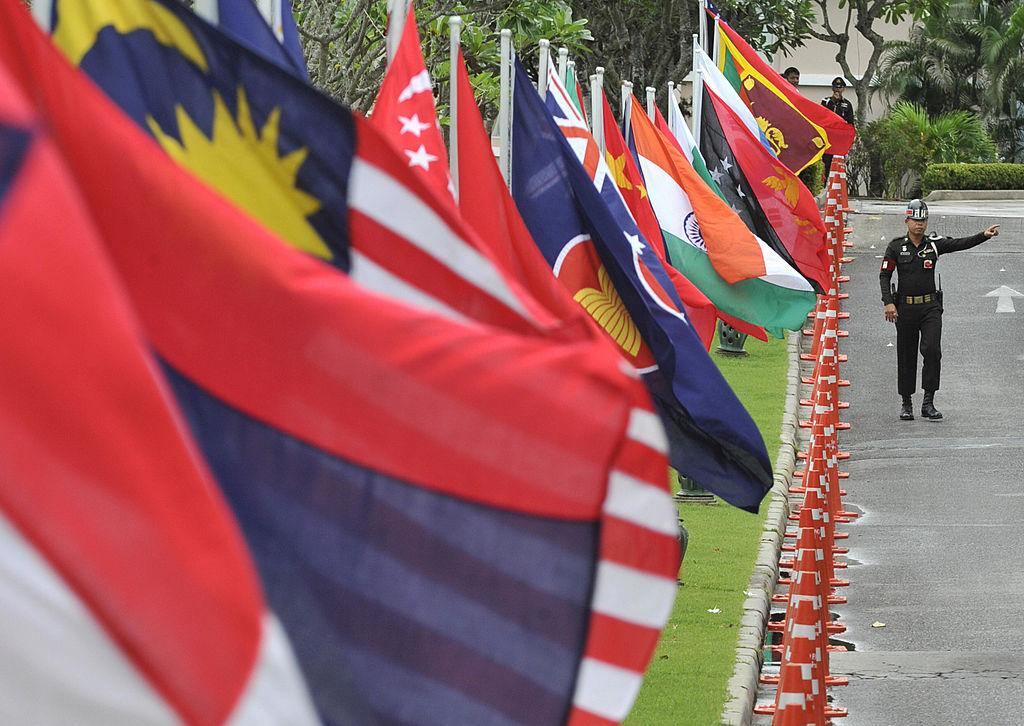
ASEAN centrality was the key principle that drove regional integration beginning with the Asian financial crisis in 1997 through to the mid-2000s. It was premised on an understanding that regional integration would be led by ASEAN.
Back then, Japan was still the second largest economy, while the US remained the preponderant power in the region. China’s power was clearly growing, but Beijing still needed to close the wide gap in capacity and capabilities between it and Washington. ASEAN could find consensus in its backyard because the geopolitical issues at the time were less severe and contentious, China was less capable, and the US and its allies enjoyed overwhelming economic, diplomatic and military superiority.
Fast-forward to 2023 and the dynamics of the region couldn’t be more different. China is the second largest economy in the world and by some measures the largest. Japan has slipped to third place and is facing a demographic implosion that will affect its ability to sustain its influence in the region. The US is no longer the preponderant power despite still enjoying relative advantages.
These dynamics have enabled China to use its economic influence to fracture ASEAN unity. In 2012, for example, Cambodia, reportedly under Beijing’s influence, objected to the wording about the South China Sea in the draft joint statement of the ASEAN ministerial meeting in which the Philippines and Vietnam voiced their opposition to China’s paramilitary activities and hydrocarbon production there. The incident caused ASEAN not to issue a joint statement for the first time in its history. China’s obstructionism re-emerged in 2016 when Beijing exerted heavy diplomatic pressure on ASEAN members not to include references to the South China Sea disputes in the draft joint statement of the special ASEAN–China foreign ministers’ meeting.
At the same time, ASEAN’s institutional functionality hasn’t changed to reflect the radical shift in the regional security environment. Members adhere strictly to the ASEAN way of decision-making, in which regional interactions and cooperation are based on discreteness, informality, consensus-building and non-confrontation. This has made multilateral engagement with ASEAN in matters of consequence inconsequential at best or a dead end at worse. Examples include addressing the coup d’état and subsequent violence in Myanmar, managing the Rohingya refugee crisis and negotiating a code of conduct for the South China Sea.
ASEAN’s heterogeneity in development, political systems and politico-economic prosperity, along with its institutional design vulnerabilities, inculcate enormous challenges into the association’s inability to create consequential policies for its internal and external environments.
Smaller, so-called minilateral groupings such as the Quad and AUKUS are not simply about ‘the beginnings of a US-led bloc that will constrain China’; rather, they are a reflection of the deep dissatisfaction with ASEAN centrality, which is easily compromised on issues of priority for China in particular.
Frustration with the ASEAN model is a force that drives pragmatic and results-focused states towards minilateral cooperation. That’s because, in many cases, in dealing with real challenges in the region, ASEAN hasn’t been part of the solution. Instead, it has been rather obstructionist or a force that has at times significantly diluted results-oriented policies.
The structure of ASEAN and other multilateral organisations is driving pragmatic states to search for new mechanisms to have effective, sustainable foreign policies. This includes the US and middle powers such as Japan and Australia.
One reason for this trend is that cooperation with a more exclusive set of like-minded states allows for more synergy in approach as well as the pooling of resources. AUKUS is a case in point. Australia, the UK and the US already engage in high-level intelligence sharing under the Five Eye framework. They also have research institute complementarity and similar strategic visions on issues facing the Indo-Pacific region. Together, these factors bode well for seamless cooperation among the three partners on advanced technologies such as artificial intelligence, quantum computing and hypersonics, not to mention nuclear-powered submarines.
Second, working through tightly knit groupings makes it much more difficult for another state to disrupt their functional cooperation. This contributes to policy execution being less susceptible to tactics to fracture multilateral consensus as we have seen with ASEAN.
Minilaterals can also allow for novel approaches to diplomacy that circumvent longstanding contested understandings such as the ‘one China’ policy. For example, Canada’s new Indo-Pacific strategy has carved out several initiatives for minilateral cooperation, such as the Partners in the Blue Pacific and the Indigenous Peoples Economic and Trade Cooperation Arrangement.
Other forums for minilateral cooperation include the General Security of Military Information Agreement, which focuses on intelligence sharing, and the trilateral security dialogue between the US, Japan and Australia, which facilitates implementation of cooperative activities.
Minilaterals are here to stay, but that doesn’t mean multilateralism is dead. The united Western front following Russia’s invasion of Ukraine demonstrates both the utility and the limits of multilateralism. Without the support of the US, the EU, Japan, Canada, Australia and other developed countries, Ukraine may have not been able to resist Russia’s aggression. Nonetheless, much of the global south and key partners such as India and ASEAN have sat on the fence, and China’s reaction to the war has violated its longstanding five principles of peaceful coexistence.
In this light, the united front against Russia’s aggression is further evidence that minilateralism or revamped multilateralism is increasingly trending towards exclusive coalitions of like-minded states cooperating through resource-pooling and diplomatic coordination on ad hoc and long-term strategic challenges. This is based on the view that overly inclusive multilateralism can fall victim to the lowest common denominator in policy consensus, resulting in stagnation or paralysis.